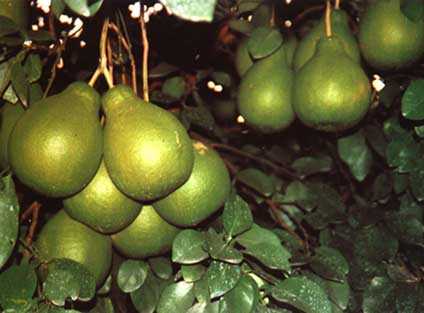Processing of pulverized hay as green feed
Chicken manure - a good oxen fodder
14 Compiled by Hong Xiyan, Yuxi Professional Agriculture School, China.
Development of animal husbandry for merchandise production depends on provision of large quantities of pulverized hay as top grade green feed, while encouraging grazing on pastures, so as to keep a balanced supply of animal feed all year round. Pulverized hay as green feed is an important source of protein, vitamins and mineral contents as nutrients for animals is therefore of much significance to improving nutrition condition of domestic animals. It is also a main constituent of granulated fodder. Thus processed hay saves around three fourth to four fifth of storage space, while retaining 16-20% more carotene. The processing includes drying of the hay in sun or by machine, them pulverization, filtration and then storage with nitrogen.
15 Compiled by Lui Xiaowen, Hebei Hedan Agriculture College, Hebei.
Three methods for preparing chicken manure for fodder
Feeding method
Chicken manure has nutritive value; it contains 11.4% water, 28.7% protein, 13.84% fiber, 7.8% calcium, 2.1% phosphorus and vitamin B. Besides, it contains 550-1350 calories of metabolic energy. Therefore, it is a good supplementary fodder for proteins, minerals and energy, for oxen.
One is to dry manure by putting fresh manure on clean ground in thin layer in air for 2-3 days in summer. The experience in practice shows that it will dry after 2-3 days in summer, 3-5 days in autumn and 7-10 days in winter. Take out sand and impurity from dry manure.
The second method is to spray 37% formalin mixed with dry manure with a ratio of 550 g to every 100 kg of manure. After 12 hours of mixing it is ready to use. Formalin kills colon bacillus and other germ that cause disease.
The third method is to ferment manure. Mix this manure with chaff in proposition 7: 3, add salt and water. The usage of salt and water is 0.5% and 60% weight of manure and chaff respectively. It is then put it in a container and closed for 3-5 weeks.
The amount of manure added to the fodder should be increased slowly in order to make the oxen accustomed to eating it. The usage of 15% manure in fodder is suitable for oxen younger than 12 months, 40% manure is suitable for oxen older than 12 months.
However, make sure that it is not used if chicken manure was not processed as mentioned above as well as if manure is not mixed with other fodder. The usage of manure should never exceed 40% of the total weight of fodder.
Publications of PWMTA - ASIAN WATMANET
I. ASIAN WATMANET Newsletters
Issue No. 1, theme: WMTUH and FARM Introduction
Issue No. 2, theme: Status of Watershed Management in Asia
Issue No. 3, theme: Farmers' Organizations
Issue No. 4, theme: Policy Issues in Watershed Management
Issue No. 5, theme: Gender Framework for Resource Management
Issue No. 6, theme: Participatory Watershed Management Training
Issue No. 7, theme: Gaps in Participatory WM Training and Education in Asia
Issue No. 8, theme: Envisioning of WM professionals
Issue No. 9, theme: Elements of Participatory Processes in WM
Issue No. 10, theme: Land Use Titles - A Key to People's Participation
Issue No. 11, theme: Sustainability of Participatory WM
Issue No. 12, theme: Participatory Watershed PME
Issue No. 13, theme: Indigenous Technology Knowledge for WM
Issue No. 14, theme: Sustaining Success and Learning from Failure: Farmers'
Institution Building for WM
Issue No. 15, theme: People's Movements in Watershed Management
Special issue: Membership Directory (I, II & III Edition)
II. Field Documents
No. 1 Status of watershed management in Asia
No. 2 A rapid review of the NWDPRA in India
No. 3 Case study of people's participation in WM in Nepal (BTRT area),
(in Nepalese language, out of press)
No. 4 Case studies of people's participation in WM in Asia:
Part 1: Nepal, China and IndiaNo. 5 Case studies of people's participation in WM in Asia:
Part 2: Sri Lanka. Thailand and Vietnam.No. 6 Recent Developments, Status and Gaps in participatory watershed management training and education in Asia
A Training Resource PackNo. 11 Indigenous Technology Knowledge for Upland WM in Bangladesh

PARTICIPATING COUNTRIES
Afganistan
Bangladesh
Bhutan
China
India
Myanmar
Nepal
Pakistan
Sri Lanka
Thailand